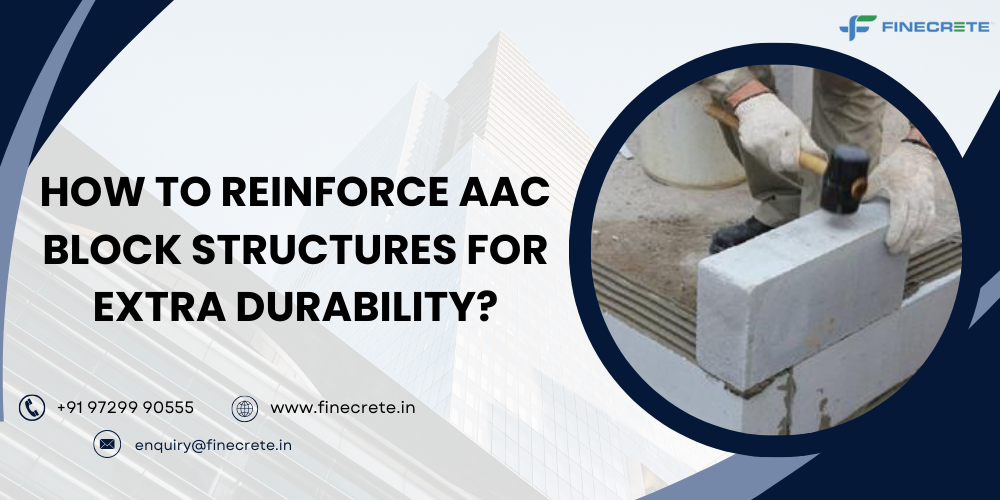AAC (Autoclaved Aerated Concrete) blocks are known for their lightweight, energy-efficient, and durable properties. However, reinforcing AAC block structures can further enhance their strength and durability. It can make them suitable for various construction projects. Find out how you can reinforce AAC block construction projects, ensuring their longevity and structural integrity.
Consult a Structural Engineer
It is essential to consult a qualified structural engineer before you reinforce an AAC block construction structure. A pro engineer will assess the specific requirements of your project, considering factors such as:
- Load-bearing capacity,
- Seismic activity, and
- Local building codes
The engineer will provide recommendations on the type, size, and placement of reinforcement materials required to reinforce the AAC block structure effectively.
Reinforcement Planning
Based on the recommendations of the structural engineer, you have to plan the reinforcement for your AAC block construction structure. Determine the positions for vertical and horizontal reinforcement elements, such as steel bars or mesh. Consider areas that require additional support, such as:
- Corners,
- Openings, and
- Load-bearing walls
This planning ensures that reinforcement is strategically placed to provide maximum strength and stability to the AAC block structure.
Prepare the AAC Block Walls
Before reinforcing, ensure that the AAC block walls are clean and free from debris. Remove any loose mortar or dust that may affect the adhesion of reinforcement materials.
Use a wire brush or a broom to clean the surface thoroughly. Make the AAC block surface slightly wet. It can improve the bond between the blocks and the reinforcement materials.
Install Vertical Reinforcement Elements
Install vertical reinforcement elements as per the specifications of the structural engineer. Typically, this involves inserting steel bars into pre-drilled holes in the AAC block walls. Use an appropriate adhesive or grout to secure the steel bars in place, ensuring proper alignment and spacing. Vertical reinforcement provides strength and stability, especially in areas prone to vertical loads or seismic activity.
Install Horizontal Reinforcement Elements
Next, install horizontal reinforcement elements to reinforce the structure further. You can do this by placing steel mesh or bars between the AAC blocks. Make sure that they overlap and are embedded in the mortar securely.
Horizontal reinforcement helps distribute stress and increases the structural integrity of the walls, especially in areas susceptible to lateral forces or bending moments. You have to follow the guidance of a structural engineer to place vertical and horizontal reinforcement elements strategically.
Fill Joints and Apply Mortar
Once the reinforcement is in place, fill the joints between the AAC blocks with mortar, ensuring proper adhesion and complete coverage. The mortar should be of the appropriate strength and consistency for optimal bonding.
Apply a thin layer of mortar on the surface of the AAC block walls. You can create a smooth finish and protect the reinforcement from corrosion. Allow the mortar to cure as required.
Reinforcing AAC block structures can significantly enhance their durability and strength. Follow the aforementioned steps to ensure a robust and long-lasting AAC block construction structure that can withstand heavy loads and various environmental factors.






